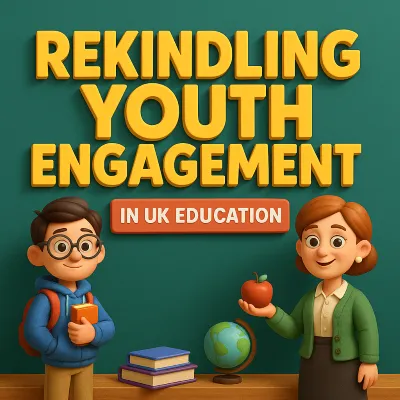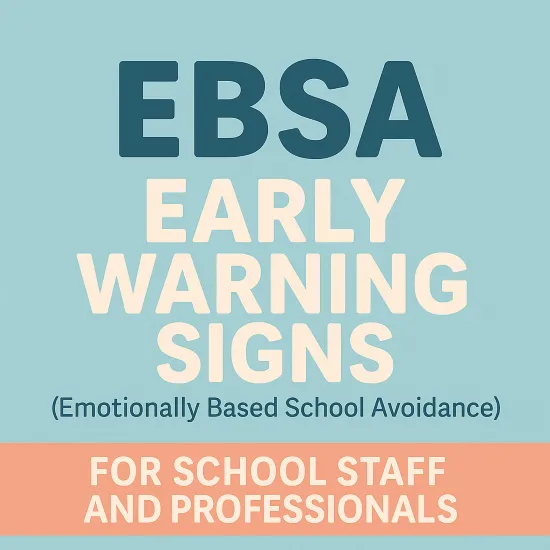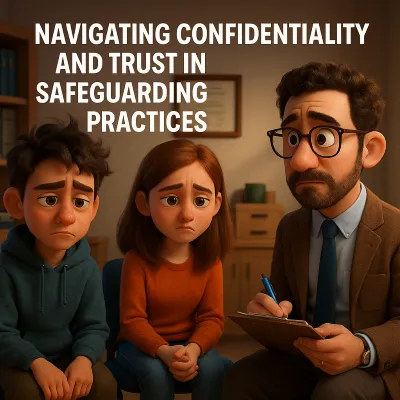Understanding Student Disengagement in UK Education: An Introduction
The phenomenon of young people disengaging from education presents a significant challenge to educational systems worldwide, with profound implications for individual life trajectories and societal well-being.
Disengagement, often manifesting as diminished participation, withdrawal from learning activities, or premature school leaving, can curtail academic attainment and subsequent opportunities (Bland, Carrington and Brady, 2009).
In the United Kingdom, as in many developed nations, concerns persist regarding cohorts of students who become alienated from mainstream schooling, leading to increased risks of social and economic marginalisation.
Understanding the multifaceted reasons underpinning this disaffection is paramount for developing effective interventions. This article examines the principal causes of educational disengagement among young people, with a particular focus on what educational institutions, specifically schools, can implement to re-ignite learners' interest and participation.
It synthesises existing research to explore the interplay of individual, school-level, and socio-economic factors contributing to disengagement, before critically evaluating a range of school-based strategies designed to promote re-engagement.
The aim is to provide a comprehensive overview that informs both policy and practice, contributing to the development of more inclusive and responsive educational environments capable of meeting the diverse needs of all students.
The UK Student Disengagement Crisis: Trends and Definitions

A clear comprehension of educational disengagement, including its definition, measurement, and prevalence, is foundational to addressing this complex issue. The way disengagement is conceptualised influences how it is identified and subsequently tackled within educational settings. Recognising the scale and patterns of disengagement among UK youth populations allows for targeted and informed responses.
What is Student Disengagement? Key Indicators in UK Schools
Educational disengagement is widely recognised as a multidimensional construct, encompassing behavioural, emotional (or affective), and cognitive dimensions (Main and Whatman, 2023).
Behavioural disengagement involves a lack of participation in academic and social aspects of school life, such as poor attendance, disruptive conduct, or failure to complete assignments (Main and Whatman, 2023).
Emotional disengagement is characterised by negative feelings towards school, teachers, or learning, including boredom, anxiety, or a sense of alienation.
Cognitive disengagement refers to a lack of psychological investment in learning, diminished effort, and an absence of intrinsic motivation or self-regulation strategies (Main and Whatman, 2023).
While teachers often focus on observable behavioural engagement, this can sometimes be mistaken for passive compliance rather than active cognitive involvement (Main and Whatman, 2023).
Measuring disengagement is challenging due to its complex nature and the frequent reliance on adult perspectives, such as those of policymakers or educators, which may not fully capture the students' own experiences (Bland, Carrington and Brady, 2009). A holistic understanding requires integrating all three dimensions (Main and Whatman, 2023).
How Widespread is Student Disengagement in the UK?
Student disengagement from school is an increasing concern within educational systems, including in the UK (Main and Whatman, 2023). While precise, contemporaneous UK-wide statistics necessitate ongoing monitoring, trends indicate that disengagement often escalates as students progress through their schooling, with a notable increase during the middle years of education (typically corresponding to Key Stage 3, ages 11-14) (Bland, Carrington and Brady, 2009).
Early signs can manifest as disruptive behaviour, school refusal, absenteeism, poor academic achievement, or alienation from peers (Main and Whatman, 2023).
For students from low-income backgrounds, the consequences of disengagement can be particularly severe, potentially leading to academic failure and early school-leaving, which in turn perpetuates social and educational disadvantages (Bland, Carrington and Brady, 2009).
National data on school attendance, exclusions, and attainment rates offer partial insights, but a deeper understanding requires nuanced data that captures the behavioural, emotional, and cognitive facets of disengagement across different demographic groups and geographical areas within the UK.
The process of disengagement leading to school dropout is not a singular event but a gradual decline (Main and Whatman, 2023).
Why Do Students Disengage? Causes of School Disaffection in the UK

The reasons young people disengage from education are varied and complex, rarely attributable to a single cause. Instead, disengagement typically arises from an interplay of factors at the individual, school, and societal levels. A comprehensive analysis of these causal factors is essential for designing effective re-engagement strategies.
Mental Health, Motivation, and the Individual Factors Behind Disengagement
A range of individual learner characteristics and psychological factors can influence a student's propensity to disengage. These include specific learning difficulties, mental health challenges, and levels of intrinsic motivation and self-efficacy.
Students' physical and emotional states significantly influence their capacity to engage, sometimes beyond the direct control of classroom teachers (Main and Whatman, 2023). For instance, research indicates that self-efficacy beliefs are related to student engagement, suggesting that students who doubt their capabilities may be more prone to withdrawal (Main and Whatman, 2023).
Furthermore, social and emotional learning "gaps" can act as barriers to accessing the curriculum and may be overlooked when addressing disengagement (Main and Whatman, 2023).
Understanding these individual predispositions and experiences is a critical first step in identifying students at risk and tailoring appropriate support mechanisms.
The Interplay of Learning Difficulties, Mental Health, and Intrinsic Motivation
Learning difficulties, whether diagnosed or undiagnosed, can create significant barriers to academic success, leading to frustration and a sense of failure that fuels disengagement.
Mental health issues, such as anxiety, depression, or trauma, can profoundly impact a student's ability to concentrate, participate, and form positive relationships within the school environment.
Intrinsic motivation, the inherent desire to learn and explore, can be eroded by repeated negative experiences or a perceived lack of relevance in educational content. A deficit view often constructs school disengagement in terms of student deficiencies, implying a need for remedial actions by the school (Bland, Carrington and Brady, 2009).
The absence of well-developed social and emotional skills can further exacerbate these challenges, making it difficult for students to manage their emotions, build relationships, and make responsible decisions, all of which are foundational to sustained engagement (Main and Whatman, 2023).
School-Based Causes of Disengagement: Curriculum, Teaching, and Relationships
The school environment itself plays a substantial part in either promoting engagement or contributing to disaffection. Aspects such as the curriculum's relevance, the teaching methods employed, the overall school climate, and the quality of relationships between staff and students are key determinants. When schooling becomes an alienating experience, some students may perceive little alternative but to withdraw (Bland, Carrington and Brady, 2009).
The interactions students have within the learning context, including with peers and teachers, can enhance engagement if deliberately facilitated through targeted pedagogic approaches (Main and Whatman, 2023). Therefore, examining these school-level factors is crucial for identifying areas where institutional changes can make a significant difference.
Impact of Curricular Irrelevance and Didactic Teaching Methodologies
A curriculum that students perceive as irrelevant to their lives, interests, or future aspirations can lead to boredom and a lack of intellectual investment (Bland, Carrington and Brady, 2009). If learning materials and activities fail to connect with students' experiences or ignite their curiosity, they may 'turn off' from education through passive or active resistance (Bland, Carrington and Brady, 2009).
Similarly, over-reliance on didactic, teacher-centred teaching methodologies that offer limited opportunities for student participation, choice, or active learning can stifle engagement (Bland, Carrington and Brady, 2009).
A 'techno-rational' lens, which views engagement superficially as student compliance and being 'on task', requires little engagement of students' imaginations (Bland, Carrington and Brady, 2009).
This can affect not only students struggling academically but also gifted and talented students who find little to appeal to their imaginations (Bland, Carrington and Brady, 2009).
The Significance of School Climate and Teacher-Student Rapport
The overall climate of a school, encompassing its values, social norms, and the quality of interpersonal relationships, profoundly affects student engagement. A negative or unsupportive school climate can lead to feelings of alienation and insecurity. Conversely, a positive climate that promotes respect, inclusivity, and a sense of belonging can enhance students' connection to school (Beck and Reilly, 2016).
Teacher-student rapport is particularly vital. Poor relationships with teachers are often cited by disengaged young people as a primary barrier (McMahon, Harwood and Hickey-Moody, 2015). When students feel that teachers do not respect them or understand their needs, they are less likely to engage. Students will enter a partnership in learning when they feel they have a stake in school and are respected enough to be consulted (Bland, Carrington and Brady, 2009). Thus, fostering positive, respectful relationships is a cornerstone of re-engagement efforts.
The Impact of Poverty and Social Factors on UK Student Engagement

Beyond individual and school-level factors, broader socio-economic and systemic influences contribute to educational disengagement. These include familial circumstances, community environments, and wider societal pressures that can create barriers to learning and participation for some young people.
Students from economically disadvantaged backgrounds often face compounded challenges that can negatively impact their educational experiences and outcomes (Callingham, 2016).
Addressing disengagement therefore requires an understanding of these wider contextual factors and how they interact with individual and school-based experiences. The systemic nature of disengagement suggests a need for collective action, potentially involving interprofessional teams and community agency-school partnerships to bridge gaps between schools and external support services (Lawson and Lawson, 2020).
Exploring Familial, Community, and Wider Societal Pressures
Familial factors such as poverty, parental unemployment, low parental educational attainment, or instability within the home can create stress and limit the resources available to support a child's education.
Community characteristics, including levels of deprivation, lack of local amenities, or high crime rates, can also affect student well-being and engagement (Bland, Carrington and Brady, 2009).
Wider societal pressures, such as economic inequality, limited opportunities in certain areas, or negative peer influences, can further disincentivise educational participation. The consequences of disengagement for students from low-income backgrounds can be particularly severe, leading to cycles of disadvantage (Bland, Carrington and Brady, 2009).
These external pressures can make it difficult for students to prioritise education, even when individual and school factors are otherwise conducive to engagement.
Effective School Re-engagement Strategies in the UK
Schools are pivotal sites for interventions aimed at re-engaging young people. By innovating pedagogical practices and reimagining curricula, educational institutions can create learning environments that are more responsive to the needs of disaffected students, thereby promoting renewed interest and participation.
Designing a Student-Centred Curriculum to Re-engage Disengaged Learners
A key strategy for re-engagement involves a fundamental rethinking of the curriculum to make it more relevant, engaging, and empowering for students. This includes offering greater choice in what and how students learn, and providing opportunities for them to exercise agency over their educational pathways.
An 'interpretative/student-centred' ideological lens emphasises student choice and active learning in the curriculum, constructing opportunities for students to apply their creative imaginations to their educational engagement (Bland, Carrington and Brady, 2009).
Curricula that are relevant to children's lives and allow for participatory and motivating learning experiences are more likely to be engaging (Main and Whatman, 2023).
When students see a clear connection between what they are learning and their own lives, interests, or future aspirations, their motivation and investment are likely to increase.
Integrating Vocational Pathways and Authentic, Real-World Learning Experiences
Integrating vocational pathways alongside traditional academic routes can provide practical, hands-on learning opportunities that appeal to students who may not thrive in purely academic settings. These pathways can offer clear links to future employment and skill development, enhancing the perceived relevance of education.
Authentic, real-world learning experiences, such as project-based learning, community-based projects, or work placements, allow students to apply their knowledge and skills in meaningful contexts (Pizziconi et al., no date). Such experiences can make learning more tangible and engaging, demonstrating its practical value.
For example, the introduction of engineering design across curricula via service-learning projects can facilitate integrated learning and promote problem-solving skills by addressing real community needs (Pizziconi et al., no date). Ensuring the curriculum is relevant to students' lives is a key component of successful re-engagement programs (Main and Whatman, 2023).
Transforming Teaching Practices to Boost Student Engagement

Transformative pedagogical approaches move away from passive, didactic instruction towards methods that actively involve students in the learning process, promote critical thinking, and connect learning to students' lives and experiences.
Such approaches acknowledge that engagement is not merely about compliance but about fostering genuine intellectual and emotional investment (Bland, Carrington and Brady, 2009).
Responsive teaching practices, which attend to the distinctive attributes of the age group and ensure learning is participatory and motivating, are essential (Main and Whatman, 2023).
Adopting such pedagogies can help to create a more dynamic and stimulating learning environment where students feel valued as active contributors to their own education.
The Efficacy of Student-Centred, Project-Based, and Technology-Mediated Instruction
Student-centred approaches place the learner at the heart of the educational process, tailoring instruction to individual needs, interests, and learning styles. Project-based learning, for instance, allows students to engage deeply with a topic over an extended period, often working collaboratively to solve real-world problems or create meaningful products (Musicant and Guzey, 2015).
The 'students-as-researchers' methodology, where students investigate phenomena within their own schools and peer groups, can provide a legitimating framework for student voice and add their perspectives to debates on preventing disengagement (Bland, Carrington and Brady, 2009).
Technology-mediated instruction, when used effectively, can offer new avenues for engagement, providing access to diverse resources, facilitating collaboration, and allowing for personalised learning experiences (Bergdahl and Nouri, 2020).
For example, creating short science films on mobile devices has been shown to increase student engagement through collaborative learning and storytelling (Martin, Davis and Sandretto, 2019).
How Inclusive School Cultures Improve Student Engagement
Beyond curriculum and pedagogy, the overall school environment is critical in re-engaging young people. Creating a supportive and inclusive ethos, where students feel safe, respected, and connected, can significantly influence their willingness to participate and learn.
Using Pastoral Care and Whole-School Support to Prevent Disengagement
Robust pastoral care systems and comprehensive student support services are essential components of a re-engagement strategy. These systems provide a safety net for students facing academic, social, or emotional difficulties, offering timely and appropriate assistance. This includes a focus on social and emotional skills, which are recognised as academic enablers (Main and Whatman, 2023).
Schools that prioritise student well-being and offer accessible support are better equipped to identify and address the underlying causes of disengagement before they escalate.
Effective support systems demonstrate to students that the school cares about their holistic development, not just their academic performance.
Implementing Coordinated Mentoring, Counselling, and Special Educational Needs (SEN) Provisions
Coordinated support mechanisms such as mentoring programmes can provide students with positive role models and individualised guidance, helping them to navigate challenges and build confidence (Volskis, Hunt and Beale, 2020).
Access to professional counselling services within the school can help students address mental health issues or personal difficulties that may be impeding their engagement.
For students with Special Educational Needs (SEN), tailored provisions and support are crucial to ensure they can access the curriculum and participate fully in school life.
Targeted social and emotional learning (SEL) programmes, focusing on self-management, responsible decision-making, relationship skills, social awareness, and self-awareness, have shown considerable success in re-engaging students, particularly during early adolescence when signs of disengagement may first appear (Main and Whatman, 2023).
Positive School Ethos and Student Belonging: Keys to Engagement
A positive school ethos, characterised by mutual respect, trust, and a sense of community, is fundamental to student engagement.
When students feel a sense of belonging and psychological safety, they are more likely to take risks in their learning, express their views, and participate actively in school life (2020). This involves creating an environment where diversity is valued, bullying is not tolerated, and all students feel that their contributions are recognised.
Building such an ethos requires a whole-school commitment, involving staff, students, and parents in a collective effort to create a welcoming and supportive learning community (Beck and Reilly, 2016).
Strategies for Building Inclusive Cultures and Supportive Peer Relationships
Strategies for building inclusive cultures include promoting student voice and participation in school decision-making, celebrating diversity, and ensuring that school policies and practices are equitable (Bland, Carrington and Brady, 2009).
Developing supportive peer relationships is also vital, as positive peer interactions can enhance social and emotional well-being and academic motivation (Main and Whatman, 2023).
Schools can facilitate this through cooperative learning activities, peer mentoring programmes, and initiatives that promote empathy and understanding among students.
Intentional efforts to build and promote positive relationships within the classroom and school are key to the success of re-engagement programmes (Main and Whatman, 2023).
A school environment that fosters positive peer status and teacher-student relationships contributes to behavioural engagement (Main and Whatman, 2023).
System-Level Solutions and Multi-Agency Approaches to Re-engage Learners

Sustained re-engagement of young people in education often requires efforts that extend beyond the individual school. Strategic alliances with external agencies and systemic reforms, including ongoing professional development for educators, are necessary to create a comprehensive support network.
Forging Multi-Agency Collaborations: Engaging Parents, Communities, and External Services
Effective re-engagement strategies frequently involve collaboration between schools, families, community organisations, and external support services. Such multi-agency approaches can provide a more holistic and coordinated response to the complex needs of disengaged youth (Lawson and Lawson, 2020).
Building bridges between schools and community health, mental health, and social service agencies can ensure that students receive comprehensive support that addresses both educational and non-educational barriers to engagement (Lawson and Lawson, 2020).
Social interactions with parents, peers, and other ancillary staff can enhance student engagement in learning, especially when deliberately facilitated (Main and Whatman, 2023).
Developing Productive Home-School Alliances and Leveraging Community Assets
Strong home-school alliances are critical. When schools and families work in partnership, sharing information and supporting common goals, students are more likely to feel supported and motivated (Kelty and Wakabayashi, 2020).
This involves regular communication, opportunities for parental involvement in school life, and support for parents in understanding how to assist their children's learning. Leveraging community assets, such as local businesses, voluntary organisations, or cultural institutions, can also enrich the learning environment and provide students with valuable real-world experiences and connections.
For example, partnerships with local employers can offer vocational tasters or apprenticeships, while community groups might provide mentoring or extracurricular activities that build skills and confidence. These collaborations recognise that schools are part of a wider ecosystem of support for young people.
Investing in Continuous Professional Development for Educators on Disengagement
Educators are at the forefront of efforts to re-engage students, and their skills, knowledge, and attitudes are paramount. Investing in continuous professional development (CPD) specifically focused on understanding and addressing student disengagement is crucial for equipping teachers and support staff with the necessary competencies.
This includes training on early identification of at-risk students, implementing responsive teaching strategies, and embedding social and emotional learning within the curriculum (Main and Whatman, 2023).
Such CPD can also help teachers to reflect on their own practices and how these might inadvertently contribute to or alleviate disengagement.
Training Teachers to Identify and Support Disengaged Students Early
Professional development should focus on enhancing teachers' abilities to recognise the early warning signs of disengagement, which can be subtle and multifaceted. This includes understanding the behavioural, emotional, and cognitive indicators.
Furthermore, CPD should equip staff with a repertoire of responsive support strategies, including differentiated instruction, positive behaviour management techniques, and skills for building strong, empathetic relationships with students (Main and Whatman, 2023).
Training in areas such as mental health awareness, trauma-informed practice, and culturally responsive pedagogy can also be highly beneficial. When teachers are involved in meaningful enterprises with students, it can enable them to work with and understand students in new ways, positively impacting school culture (Bland, Carrington and Brady, 2009).
Analysis and Implications for Educational Policy and Practice
The preceding sections have outlined the complexities of youth educational disengagement and explored various school-based strategies for re-engagement. This analysis reveals interconnected determinants and highlights several effective levers for change, carrying significant implications for educational policy and practice.
Synthesising Key Determinants of Disengagement and Effective Re-engagement Levers
Key determinants of disengagement span individual factors (learning difficulties, mental health, low motivation (Main and Whatman, 2023)), school-level issues (irrelevant curricula, didactic pedagogies, poor relationships (Bland, Carrington and Brady, 2009; McMahon, Harwood and Hickey-Moody, 2015)), and socio-economic pressures (poverty, community disadvantage (Bland, Carrington and Brady, 2009)).
Effective re-engagement levers centre on making education more relevant and student-centred through curricular and pedagogical innovation, such as integrating vocational pathways and project-based learning (Main and Whatman, 2023; Bland, Carrington and Brady, 2009).
Cultivating supportive, inclusive school environments through strengthened pastoral care, mentoring, and positive relationships is also vital (Main and Whatman, 2023; Volskis, Hunt and Beale, 2020).
Furthermore, strategic alliances with families and communities, coupled with ongoing teacher professional development, underpin sustainable change (Lawson and Lawson, 2020; Main and Whatman, 2023). Listening to student voices is a recurring theme for effective intervention (Bland, Carrington and Brady, 2009).
Formulating Recommendations for System-Level Policy Adjustments and Future Research Agendas
Policy adjustments should promote flexible curricular frameworks that allow for greater local adaptation and integration of vocational and experiential learning. Investment in comprehensive student support services, including mental health provisions and targeted SEL programmes, is essential (Main and Whatman, 2023).
Policies should also incentivise and support multi-agency collaboration and robust teacher CPD focused on disengagement (Lawson and Lawson, 2020).
Future research should continue to explore the nuanced experiences of disengaged youth, particularly from marginalised groups, using methods that amplify student voice (Bland, Carrington and Brady, 2009).
Longitudinal studies evaluating the long-term impact of different re-engagement interventions are needed, alongside research into effective system-wide implementation of successful models.
There is a call for more nuanced engagement frameworks, improved data systems, and customised interventions facilitated by intervention registries (Lawson and Lawson, 2020).
Conclusion: A Roadmap to Re-Engaging Disaffected Youth in UK Schools
Re-engaging young people in education is a complex but critical endeavour. The journey from disaffection to active participation is influenced by a confluence of individual, institutional, and societal factors.
Schools serve as crucial arenas for intervention, possessing the potential to transform learning environments into spaces where all students feel valued, understood, and motivated to learn.
This requires a multifaceted approach, encompassing curricular reforms that enhance relevance and agency, pedagogical innovations that promote active and meaningful learning, and the cultivation of supportive, inclusive school cultures where strong relationships and a sense of belonging can flourish (Main and Whatman, 2023; Bland, Carrington and Brady, 2009).
Strategic alliances with families and communities, alongside sustained investment in educator development, further amplify the impact of these school-based efforts (Lawson and Lawson, 2020).
While challenges remain, a commitment to understanding student perspectives and adapting educational provision accordingly offers a promising pathway towards more inclusive and engaging educational futures, ensuring that fewer young people are left behind and all are empowered to reach their full potential.
The imperative is to move beyond simply addressing the symptoms of disengagement to tackling its root causes, thereby fostering educational systems that are truly responsive to the diverse needs of contemporary youth.


